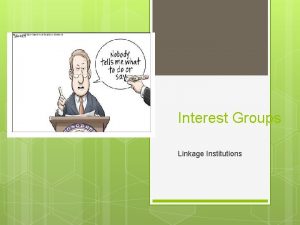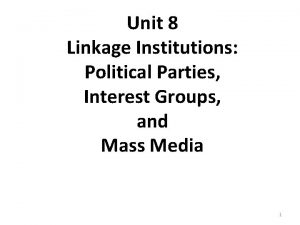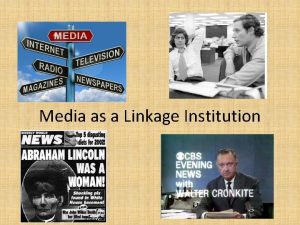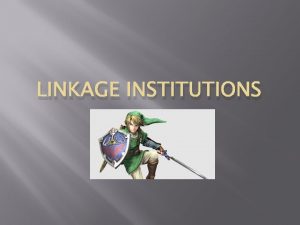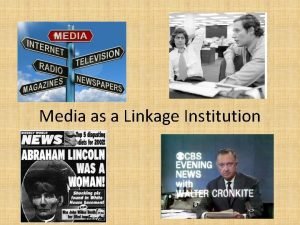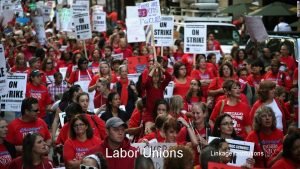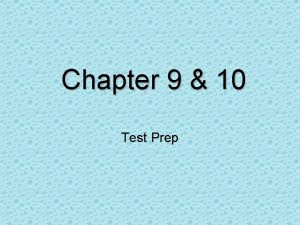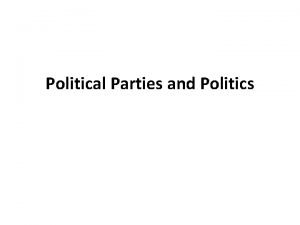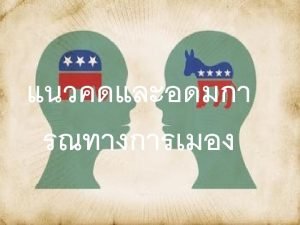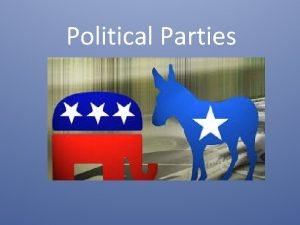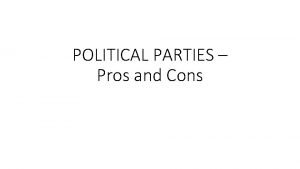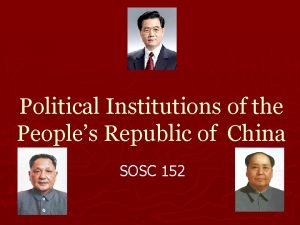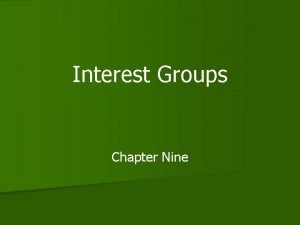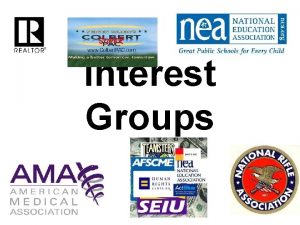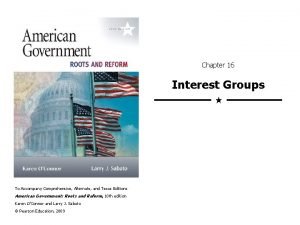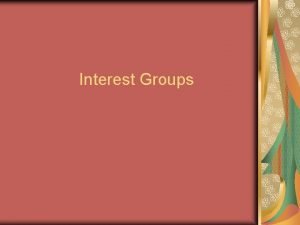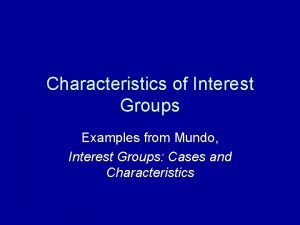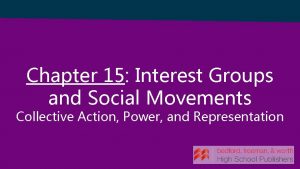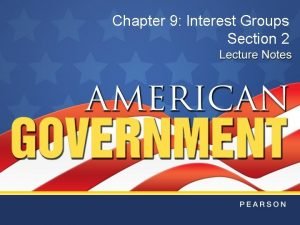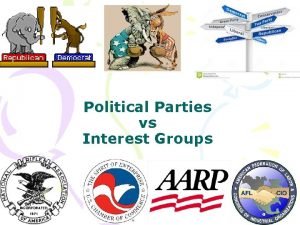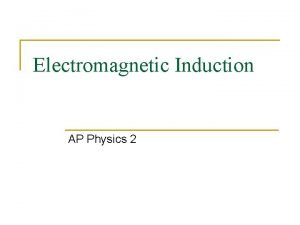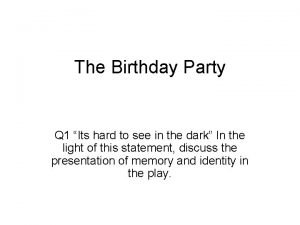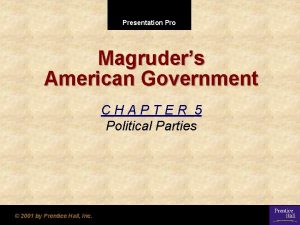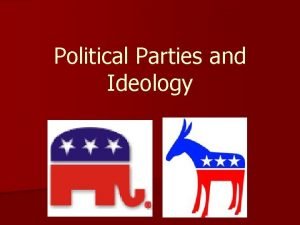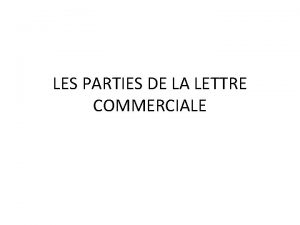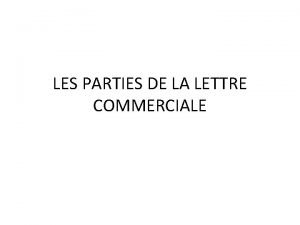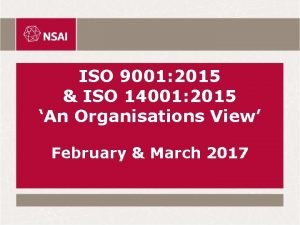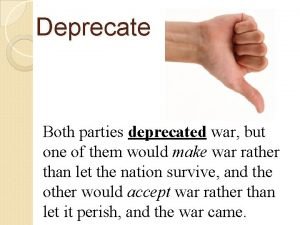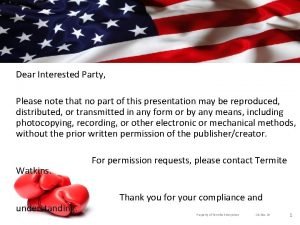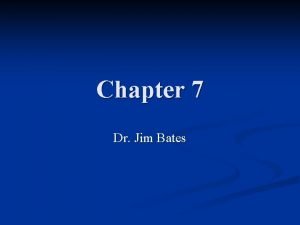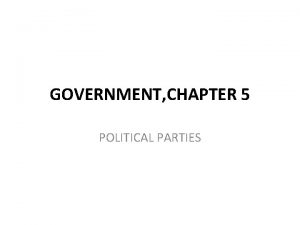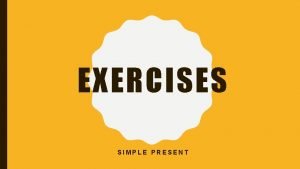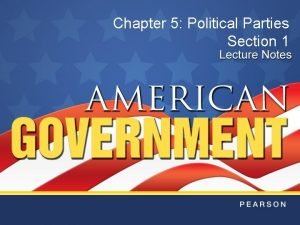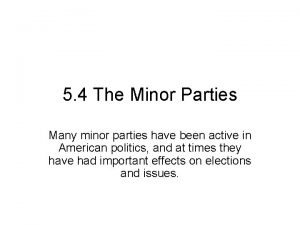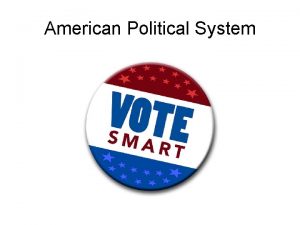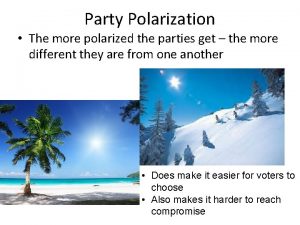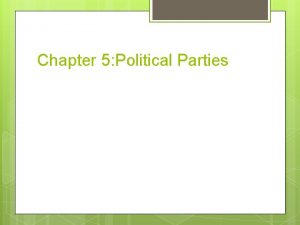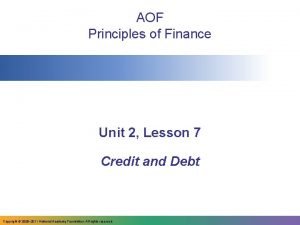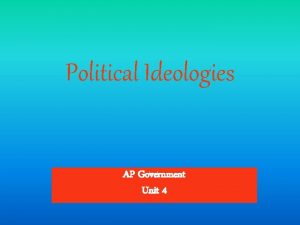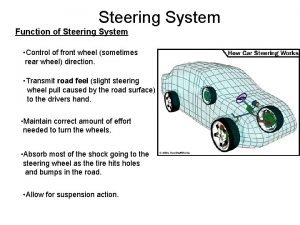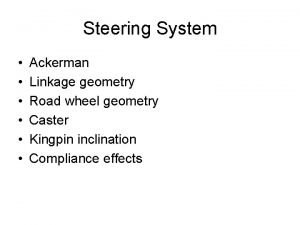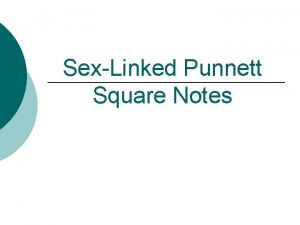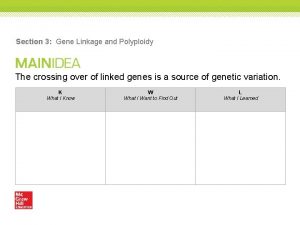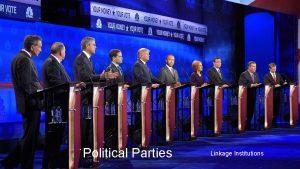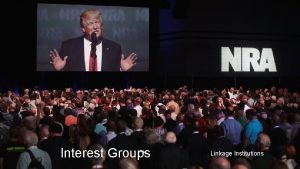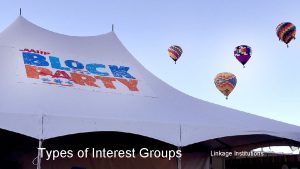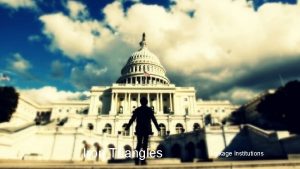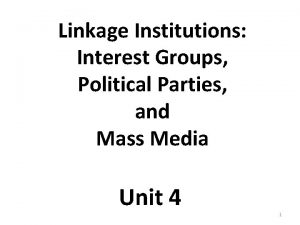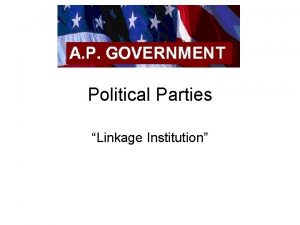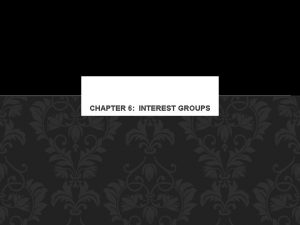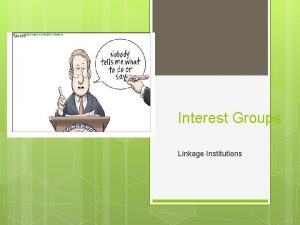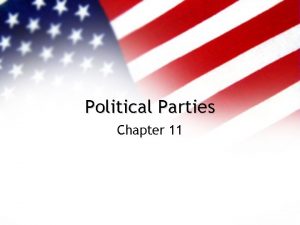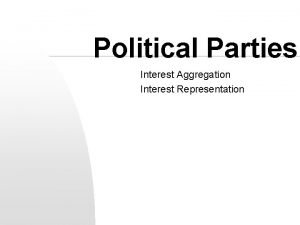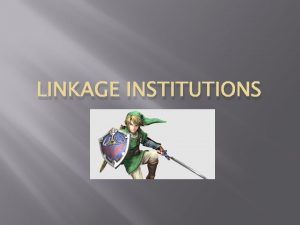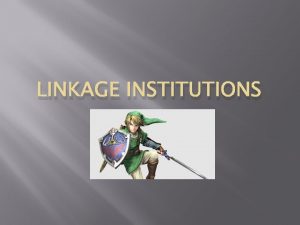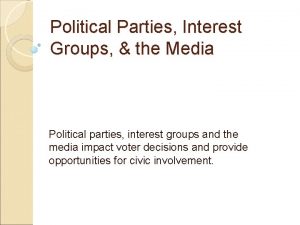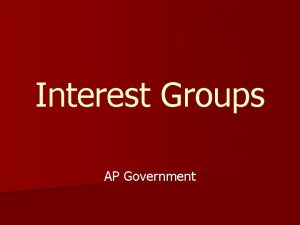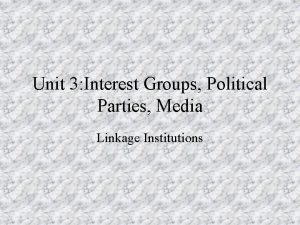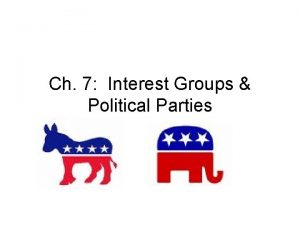Unit 8 Linkage Institutions Political Parties Interest Groups




![The Meaning of Party • Political Party: – A “team of men [and women] The Meaning of Party • Political Party: – A “team of men [and women]](https://slidetodoc.com/presentation_image_h/87219554b3d3d4bcfd4852ba859c0583/image-5.jpg)



































































- Slides: 72

Unit 8 Linkage Institutions: Political Parties, Interest Groups, and Mass Media 1

PAY ATTENTION 2

Lesson 8. 1 Overview of Political Parties 3

Linkage Institutions • Definition: The political channels through which people’s concerns become political issues on the policy agenda. – Political Parties – Interest Groups – Media
![The Meaning of Party Political Party A team of men and women The Meaning of Party • Political Party: – A “team of men [and women]](https://slidetodoc.com/presentation_image_h/87219554b3d3d4bcfd4852ba859c0583/image-5.jpg)
The Meaning of Party • Political Party: – A “team of men [and women] seeking to control the governing apparatus by gaining office in a duly constituted election” • Parties can be thought of in three parts: – Party in the electorate – Party as an organization – Party in government • Tasks of the Parties: – Parties Pick Candidates – Parties Run Campaigns – Parties Coordinate Policymaking

The Meaning of Party • Parties, Voters, and Policy: The Downs Model • Two Theories on how citizens vote: – Rational-choice theory • Assumes that individuals act in their own best interest, weighing the costs and benefits of possible alternatives – Downs Model • Voters maximize chances that policies they favor are adopted by government. • Parties want to win elected office.

The Meaning of Party

The Party in the Electorate • These are the citizens who vote for candidates in the party. • Party image – A voter’s perception of what Republicans or Democrats stand for • Party identification – A citizen’s self-proclaimed preference for one party or the other – Republican, Democrat, or Independent • Ticket-splitting – Voting with one party for one office and with another party for other offices – Independents are most likely to split tickets. – No state or race is completely safe due to split tickets.

The Party in the Electorate

The Party as the Organization • These are the people that work for the party. • Local Parties – From the late 19 th century to the 1930 s, cities were dominated by party machines: a type of political party organization that relies heavily on material inducements to win votes and to govern – Party machines use Patronage: a job, promotion or contract given for political reasons rather than merit; used by party machines – Due to progressive reforms, urban party organizations are generally weak. – Revitalization of party organization at county level

The Party as the Organization • There are 50 state party systems, and no two are alike, as each have different laws: – Closed primaries: Only people who have registered with the party can vote for that party’s candidates. – Open primaries: Voters decide on Election Day whether they want to vote in the Democrat or Republican primary. – Blanket primaries: Voters are presented with a list of candidates from all parties. – State parties are better organized in terms of headquarters and budgets than they used to be.

The Party as the Organizations • The National Party Organizations – The supreme power within each of the parties is the National Convention: the meeting of party delegates every four years to choose a presidential ticket and the party’s platform – National Committee: one of the institutions that keeps the party operating between conventions – National Chairperson: responsible for day-to-day activities of the party

The Party in the Government • These are party members who actually elected to government • Which party controls government has policy consequences. • Coalition: a group of individuals with a common interest upon which every political party depends • Parties and politicians generally act on their campaign promises.

Lesson 8. 2 Party Eras in American History 14

Party Eras in American History • Party Eras – Throughout history, one party has been the dominant majority party for long periods of time, and tend to win elections. • Critical Election – Marks the end of a party era. – An electoral “earthquake” where new issues and new coalitions in the parties emerge. • Party Realignment – The displacement of the majority party by the minority party, usually during a critical election. It marks a major change in a political party in both the types of people who begin to support the party and in a new agenda for the party. – Throughout our history, both the Democratic and Republican parties have gone through several realignments • Party Realignment Effects on American Politics – Realignments are significant to American politics because they mark major changes in the nature of the party, and the party emerges as a completely different organization. What the party stood for 100 years ago, may not be what they stand for today.

Party Eras in American History • 1796 -1824: The First Party System – Madison warned of “factions” – Alexander Hamilton founded the first political party, the Federalists, they were also the shortest-lived. – The party’s first and only president was John Adams. – The party focused on growing the federal government and creating a national bank. – The party disappeared after Adams was defeated by Jefferson, who found the Democratic-Republicans. They focused on agrarian policies. • 1828 -1856: Jackson and the Democrats Versus the Whigs – First major Democratic Realignment. Jackson was a Democratic. Republican, but when he was elected president, the party became known as the Democrats. – The party focused on broadening political opportunities for poor men and not just the elite. – Whigs formed mainly to oppose Jackson.

Party Eras in American History • 1860 -1928: The Two Republican Eras – First major Republican Realignment. Republicans rose as the antislavery party, and Lincoln was elected as their first president in 1860. – Second major Republican Realignment. 1896 election led to three decades Republican control, which emphasized industry. The stock • 1932 -1964: The New Deal Coalition – Second major Democratic Realignment. Republicans lost control after President Hoover’s poor handling of the Great Depression. – 1932 election led to President Franklin Roosevelt forming the New Deal Coalition, which brought in Blue Collar workers, the poor, Catholics and Jews, and African Americans into the Democratic party.

Party Eras in American History • 1968 -Present: The Era of Divided Party Government – When President Nixon won the 1968 election, it began an era of divided government: one party controls Congress and the other controls White House – Divided government disadvantage – Gridlock in passing legislation. – Divided government advantage – Decreases the changes of extreme ideological legislation being passed. – Divided government due in party to: • Party dealignment: disengagement of people from parties as evidenced by shrinking party identification

Free-Response Question The Democratic and Republican parties have through several realignments. a. Define realignment. b. Describe the main effects of realignments for American politics. c. Identify one realignment for the Democratic Party and one for the Republican Party. 19

Third Parties: Their Impact on American Politics • Third parties: electoral contenders other than the two party parties; rarely win elections. • Most only focus on a single issue or take an extreme ideological stance. • However, third parties are important. – Are “safety valves” for popular discontent of the government. – Bring new groups and ideas into politics • Two-party system – The Constitution makes no mention of the US having a two-party system, but due to seats being awarded in Congress on a winner-takeall basis, it is difficult for a third party to gain power. – Two parties discourage extreme views because if there were multiple parties, each would have to make a special appeal to stand out. – Two parties also contribute to political ambiguity because those candidates who campaign to the extreme left or right in a general election are often defeated. (Ex: Barry Goldwater in 1964 and George Mc. Govern in 1972)

Lesson 8. 3 An Assessment of Political Parties 21

Understanding Political Parties • Democracy and Responsible Party Government – Political parties are important for a democracy they connect the public with the policymaking institutions. – Advocates of the Responsible Party Model believe parties should meet the following conditions: 1. Parties have distinct comprehensive programs. 2. Candidates are committed to the program. 3. The majority party must carry out its program. 4. The majority party must accept responsibility. – American political parties fall short of these conditions. – There is no mechanism for party discipline.

Understanding Political Parties • American Political Parties and the Scope of Government – Lack of uniformity keeps government small • Big programs like Health Care (1994) fail – But also makes cutting government programs difficult • Individuals focus on getting more from government for their own constituents

Understanding Political Parties • Is the Party Over? – Political parties are no longer main source of information for voters; media are – Yet parties will play an important but diminished role in American politics • State and national party organizations have become more visible and active • Majority of people still identify with a party

Lesson 8. 4 Overview of Interest Groups 25

The Role of Interest Groups • Interest group – An organization of people with shared policy goals entering the policy process at several points to try to achieve those goals – Interest groups pursue their goals in many arenas. • Interest groups are distinct from parties. – Political parties fight election battles; interest groups do not field candidates for office but may choose sides. – Interest groups are policy specialists; political parties are policy generalists.

Theories of Interest Group Politics • Pluralist Theory – Politics is mainly a competition among groups, each one pressing for its own preferred policies. • Elite Theory – Societies are divided along class lines and an upper-class elite rules, regardless of the formal niceties of governmental organization. • Hyperpluralist Theory – Groups are so strong that government is weakened. This is an extreme, exaggerated form of pluralism.

Theories of Interest Group Politics • Pluralism and Group Theory – Groups provide a key link between the people and the government. – Groups compete and no one group will become too dominant. – Groups play by the “rules of the game. ” – Groups weak in one resource may use another. – Lobbying is open to all so is not a problem.

Theories of Interest Group Politics: Pluralism • Elites and the Denial of Pluralism – Real power is held by the relatively few. – The largest corporations hold the most power. – Elite power is fortified by a system of interlocking directorates of these corporations and other institutions. – Other groups may win many minor policy battles, but elites prevail when it comes to big policy decisions. – Lobbying is a problem because it benefits the few at the expense of the many.

Theories of Interest Group Politics: Hyperpluralism • Subgovernments – Networks of groups that exercise a great deal of control over specific policy areas. – Consist of interest groups, government agency, and congressional committees that handle particular policies – Also known as iron triangles • The hyperpluralist critique – Groups have become too powerful as the government tries to appease every interest. – Many subgovernments (iron triangles) aggravate the process. – Trying to please every group results in contradictory policies.

Lesson 8. 5 Types of Interest Groups 31

Economic Interest Groups 5. 2 ¤ Business n Large corporations use political contributions to get favourable public policies. ¤ Labor n Laborers can form unions to represent their interests in areas such as wages, benefits, and working conditions. n Unions typically endorse candidates from the Democratic Party

FIGURE 5. 1: Union membership in the United States compared to other countries 5. 2

Labor unions Barack Obama meets with labor union members over breakfast during his 2008 campaign for the Democratic presidential nomination. 5. 2

Economic Interest Groups 5. 2 ¤ Professional Associations. § White-collar workers also have professional organizations, such as the American Bar Association for lawyers and the American Medical Association for doctors.

Ideological and Single-Issue Interest Groups 5. 2 ¤ Members share common viewpoint n Single-issue groups focus on one issue, such as abortion or gun control n Members are often unwilling to compromise on policies. n National Rifle Association (NRA) is the largest and most powerful group, which are dedicated to preventing gun-control legislation.

Public Interest Groups 5. 3 • Advocate for the public good, and represent people with common concerns. • The American Association of Retired Persons, or AARP, is a large, influential organization of people who are over 50 years of age.

Lesson 8. 6 Success of Interest Groups 38

What Makes an Interest Group Successful?

The Surprising Ineffectiveness of Large Groups • Potential and Actual Groups – Potential group: all the people who might be interest group members because they share a common interest – Actual group: the part of the potential group consisting of members who actually join – Collective good: something of value that cannot be withheld from a group member • Free-Rider Problem – Some people don’t join interest groups because they benefit from the group’s activities without officially joining. – Bigger the group, larger the problem – Large groups are difficult to organize • Olson’s law of large groups: – “The larger the group, the further it will fall short of providing an optimal amount of a collective good. ” – Overcome Olson’s law by providing selective benefits: Goods that a group can restrict to those who pay their annual dues

What Makes an Interest Group Successful? • Small groups are better organized and more focused on the group’s goals. – Multinational corporations are successful because there are few of them and, therefore, have an easier time organizing for political action. – Consumer groups have a difficult time getting significant policy gains because the benefits are spread over the entire population. – Public interest lobbies seek “a collective good, the achievement of which will not selectively and materially benefit the membership activities of the organization. ”

What Makes an Interest Group Successful? • Intensity – Single-Issue groups: groups that focus on a narrow interest, dislike compromise, and often draw membership from people new to politics – Groups may focus on an emotional issue, providing them with a psychological advantage. – Intensity encourages non-conventional means of participation, i. e. —protests

What Makes an Interest Group Successful? • Financial Resources – Not all groups have equal amounts of money. – It is important to have methods of fundraising. – Monetary donations usually translate into access to the politicians, such as a phone call, meeting, or support for policy. – Wealthier groups have more resources—and presumably more access—but they do not always win on policy.

Lesson 8. 7 Interest Groups and Policymaking 44

How Groups Try to Shape Policy • Lobbying – “communication by someone other than a citizen acting on his own behalf, directed to a governmental decision maker with the hope of influencing his decision” – Two basic types of lobbyists: • Regular, paid employees of a group • Temporary hires – Lobbyists: • are a source of information • help politicians plan political strategies for legislation • help politicians plan political strategies for reelection campaigns • are a source of ideas and innovations – Mixed evidence as to whether lobbying works

How Groups Try to Shape Policy • Electioneering – Political Action Committees (PAC)s are used by interest groups to donate money to candidates. • The Federal Election Campaign Act (1974) created the Federal Election Commission (FEC) to administer campaign finance laws for federal elections • These reforms led to the creation of PACs. • PACs allow corporations, labor unions and other interest groups to donate money to campaigns • The donations must be disclosed and be limited. • PACs are registered with and monitored by the FEC.

How Groups Try to Shape Policy • Litigation – If an interest group fails in one arena, the courts may be able to provide a remedy. – Interest groups can file amicus curiae briefs to influence a court’s decision. • amicus curiae: briefs submitted by a “friend of the court” to raise additional points of view and present information not contained in the briefs of the formal parties – Class Action lawsuits permit a small number of people to sue on behalf of all other people similar situated.

How Groups Try to Shape Policy • Going Public – Because public opinion makes its way to policymakers, groups try to: • cultivate a good public image to build a reservoir of goodwill with the public • use marketing strategies to influence public opinion of the group and its issues • advertise to motivate and inform the public about an issue

How Groups Try to Shape Policy • Argument against allowing PACs to make contributions – PAC contributions can lead to corruption. They are essentially buying legislation by making contributions. • Argument in favor of allowing PACs to make contributions – By making a contribution, PACs are making an expression, which is protected by the First Amendment of the Constitution. • Law that regulates PACs – Soft money are political contributions to a political party, and unlike donations to a candidate were not subject to limits. – The Bipartisan Campaign Reform Act was designed to stop PACs from making unlimited contributions to the political party, thus banning soft money. – It has been somewhat effective, but one of the loopholes is that citizens can make unlimited contributions to 527 groups. – These groups support issues, not parties, and are identified by section 527 of the tax code.

Free-Response Question Interest groups are often criticized for hurting the political process by making PAC contributions. a. Identify one argument against allowing PACs to make contributions. b. Identify one argument in favor of allowing PACs to make contributions. c. Identify one law that regulates PACs and explain why it has or has not been effective. 50

Understanding Interest Groups • Interest Groups and Democracy – James Madison’s solution to the problems posed by interest groups was to create a wide-open system in which groups compete. – Pluralists believe that the public interest would prevail from this competition. – Elite theorists point to the proliferation of business PACs as evidence of interest group corruption. – Hyperpluralists maintain that group influence has led to policy gridlock.

Understanding Interest Groups • Interest Groups and the Scope of Government – Interest groups seek to maintain policies and programs that benefit them. – Interest groups continue to pressure government to do more things. – As the government does more, does this cause the formation of more groups?

Lesson 8. 8 Overview of the Mass Media 53

Introduction • Mass Media: – Television, radio, newspapers, magazines, the Internet and other means of popular communication • High-Tech Politics: – A politics in which the behavior of citizens and policymakers and the political agenda itself are increasingly shaped by technology

The Mass Media Today • Effective communication through media is key to political success. – Media Events: events purposely staged for the media that nonetheless look spontaneous. • Media events can be staged by almost anybody. – Image making and news management is important, especially for presidents.

The Development of Media Politics • Introduction – The news media wasn’t always so important. – Press Conferences: meetings of public officials with reporters. • Franklin Roosevelt held over 1, 000 – Investigative Journalism: the use of in-depth reporting to unearth scandals, scams & schemes putting reporters & politicians opposite each other. – Coverage of presidential candidates has become less favorable.

The Development of Media Politics • The Print Media – Newspapers and magazines – “Yellow journalism”: a sensational style of reporting characterized newspapers at the turn of the century. – Pecking order among newspapers • New York Times has largest impact – Newspaper and newsweekly circulation has declined.

The Development of Media Politics • The Broadcast Media – Television and radio – Brought government and politics into peoples’ homes. • Vietnam War – Politicians’ appearances and mannerisms more important. • Kennedy-Nixon presidential debate

The Development of Media Politics • Government Regulation of the Broadcast Media – The Federal Communications Commission (FCC) regulates the use of airwaves in three ways: • Prevent near monopoly control of market • Reviews performance of stations • Issues fair treatment rules for politicians

The Development of Media Politics • From Broadcasting to Narrowcasting: The Rise of Cable News Channels – Narrowcasting: media programming on cable TV or Internet that is focused on one topic and aimed at a particular audience, e. g. , C-SPAN – Potential of cable to report on news as it happens and offer myriad choices – Yet resources are limited and stories are not substantive

The Development of Media Politics • The Impact of the Internet – Potential to inform Americans about politics – Internet is purposive—people choose what to learn about – Since Americans are generally disinterested in politics, they will not necessarily use the Internet for political information. – Blogs provide additional information about news stories. – Most young people receive their news from the Internet.

62

The Development of Media Politics • Private Control of the Media – Only a small number of TV stations are publicly owned in America. – Independent in what they can report, media are totally dependent on advertising revenues. – Chains: massive media conglomerates that account for over four-fifths of the nation’s daily newspaper circulation • Also control broadcast media

Lesson 8. 9 Reporting the News 64

Reporting the News • Finding the News – Beats: specific locations from which news frequently emanates, such as Congress or the White House – Trial Balloons: an intentional news leak for the purpose of assessing the political reaction – Reporters and their sources depend on each other —one for stories, the other to get them out.

Reporting the News • Presenting the News – Superficial describes most news coverage today. – Sound Bites: short video clips of approximately 10 seconds – Major TV networks devote less time to covering political candidates

Reporting the News • Bias in the News – Many people believe the news is biased in favor of one point of view. – Generally is not very biased toward a particular ideology – News reporting is biased towards what will draw the largest audience—good pictures and negative reporting. – In coverage of campaigns, news stories focus more on the “horse race” than substantive policy issues – The President receives the most media attention of all the government institutions.

The News and Public Opinion • Television news can affect what people think is important. • The media influence the criteria by which the public evaluates political leaders. • Increasing public attention to specific problems is a core feature of the media’s agenda-setting power. • Policy Agenda – The issues that attract the serious attention of public officials and other people actively involved in politics at the time • Policy Entrepreneurs – People who invest their political “capital” in an issue to get it placed high on governmental agenda – Use media to raise awareness of issue

The Media and Candidates • Ways the Media May Hurt the Chances of a Candidate for Office – Through investigative journalism, reporters will search for scandals about a candidate in order to receive higher ratings for their news programs. Such reporting can tarnish the reputation of a candidate and hurt his chances of being elected. – Through negative advertisements, can drive down voter turnout or have a negative impact on the candidate. • Ways the Candidate Can Use the Media to Help Their Campaigns – Candidates can stage media events, hoping to draw positive attention. These will be covered in the media and provides attention to the candidate without the candidate having to spend any money on the campaign. – Through trial balloons, a candidate can leak information to a reporter hoping that the story will get into the mainstream media in order to gauge public opinion of a campaign event. For example, a presidential candidate may leak information about his choice for vice president and then take polls to see if this choice helps the candidate or not.

Free-Response Question The independent media in American politics can both hurt candidate’s chances for getting elected to office as well as help candidates’ chances at getting elected to office. a. Identify and describe two ways the media may hurt the chances of a candidate for office. b. Identify and describe two ways candidates can use the media to help their campaigns. 70

Understanding the Mass Media • The Media and the Scope of Government – Media as watchdog restricts politicians – New proposals are met with skepticism which restricts scope of government, what it can do – If media identifies a problem, it forces government to address it, which expands the scope of government

Understanding the Mass Media • Individualism and the Media – Candidates run on their own by appealing to people on television – Easier to focus on one person like the president, than groups, e. g. , Congress or the courts • Democracy and the Media – “Information is the fuel of democracy. ” – But news provides more entertainment than information; it is superficial. – News is a business, giving people what they want.
 Linkage institutions examples
Linkage institutions examples Linkage institutions examples
Linkage institutions examples Linking loader
Linking loader What is a linkage institution?
What is a linkage institution? What is a linkage institution
What is a linkage institution How do you connect
How do you connect Linkage institutions
Linkage institutions What is a linkage institution
What is a linkage institution Interest groups
Interest groups Brainpop presidential election
Brainpop presidential election The spoils system made political parties more powerful by
The spoils system made political parties more powerful by Political parties
Political parties Political parties
Political parties Political parties
Political parties World political parties
World political parties Political parties
Political parties Political parties pros and cons
Political parties pros and cons Individuals groups and institutions
Individuals groups and institutions Political institutions in sociology
Political institutions in sociology How are ethnic groups and religious groups related
How are ethnic groups and religious groups related Free rider problem interest groups
Free rider problem interest groups The nature of interest groups
The nature of interest groups For or against
For or against A virtue of interest groups is that
A virtue of interest groups is that Proliferation of interest groups
Proliferation of interest groups State two characteristics of interest groups
State two characteristics of interest groups Interest groups vs social movements
Interest groups vs social movements Chapter 9 section 2 types of interest groups
Chapter 9 section 2 types of interest groups Federalist 10 interest groups
Federalist 10 interest groups What are interest groups
What are interest groups Fundamental goal of interest groups
Fundamental goal of interest groups Nominal v. real interest rates
Nominal v. real interest rates Nominal rate
Nominal rate Compound interest meaning
Compound interest meaning Application of faraday's law
Application of faraday's law Unit 6 review questions
Unit 6 review questions Section 4 the minor parties
Section 4 the minor parties Essay on birthday party in 200 words
Essay on birthday party in 200 words Chapter 5 section 1 parties and what they do
Chapter 5 section 1 parties and what they do Self-announcement definition
Self-announcement definition Brunch party meaning
Brunch party meaning Les différentes parties de la lettre commerciale
Les différentes parties de la lettre commerciale La lettre commerciale
La lettre commerciale Dauphin partie du corps
Dauphin partie du corps Quality policy
Quality policy Deprecate in a sentence
Deprecate in a sentence Dear interested
Dear interested Parties d'un microscope
Parties d'un microscope Why does gatsby stop giving parties
Why does gatsby stop giving parties Economic protest parties definition
Economic protest parties definition Sarah and pam often go to parties
Sarah and pam often go to parties Plan texte narratif
Plan texte narratif Chapter 5 section 1 parties and what they do
Chapter 5 section 1 parties and what they do Accounting information system chapter 1
Accounting information system chapter 1 Economic protest parties definition
Economic protest parties definition Socialist parties
Socialist parties Sujet posé texte argumentatif
Sujet posé texte argumentatif Auris externa
Auris externa Comparaison entre cellule animale et végétale
Comparaison entre cellule animale et végétale Why is gatsby's love for daisy doomed to fail
Why is gatsby's love for daisy doomed to fail Power point parties
Power point parties Barbara hinchcliffe
Barbara hinchcliffe Innovator role of minor parties
Innovator role of minor parties Gaines techniques parties communes
Gaines techniques parties communes Splinter parties definition
Splinter parties definition Personal finance unit 2 lesson 2
Personal finance unit 2 lesson 2 Political ideology definition ap gov
Political ideology definition ap gov Functions of steering
Functions of steering Ackerman
Ackerman Hemophilia cross punnett square
Hemophilia cross punnett square Linkage
Linkage Advanced higher biology unit 2
Advanced higher biology unit 2 Section 3 gene linkage and polyploidy
Section 3 gene linkage and polyploidy
